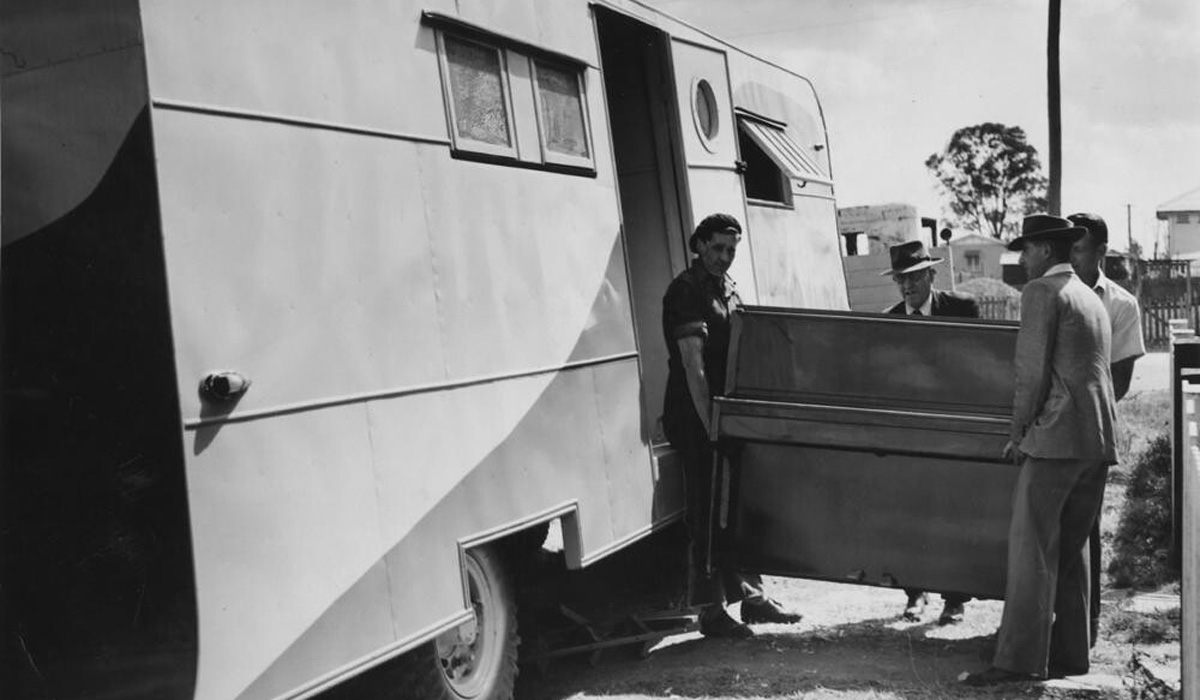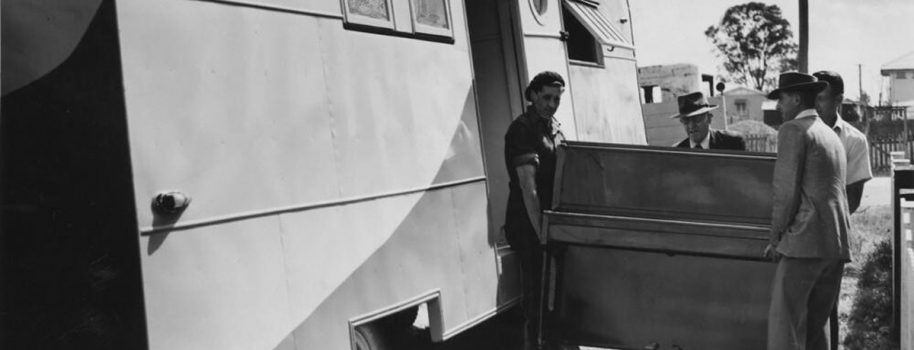Have you ever wondered how to transport or just move a piano? We all know that pianos are heavy. The heaviest ones can weigh up to 300kg. Therefore, it is really easy to damage the instrument during transportation. It is most regretful when our piano is visually taken care of and it’s hard then to come to terms with any scratches or dents. In this article, I will explain what are the best practices of transporting a piano to avoid any damage that transportation may cause.
Most piano models have handles and rollers that enable transport
Usually, pianos have handles on the back of each side and they can be moved on flat ground because they have so-called slides or rollers, i.e. iron or brass wheels. Then, you can push the piano a few meters, although moving the instrument requires strength, because the rollers are usually not ball bearings. For floors that are sensitive to weight, such as a parquet, so as not to damage it – it’s best to put blankets under the rollers.

Transporting a piano across the ground floor
If you want to transport an instrument on the ground floor from one room to another, it’s best to help yourself with a furniture trolley. It is a four-wheeled cart about 65 x 45 x 25 covered with rubber so that the instrument does not fall during maneuvers. You have to raise the instrument and place the trolley under it. Preferably by the aforementioned handles on the back of the piano (one hand) and under the keyboard table (second hand) – this is a job for at least two people. Another way is to raise the instrument only on one side to such a height (about 45 degrees) that the trolley can be inserted. When lifting, part of the weight rests on the opposite edge of the instrument (it must be secured with a sponge, blanket). While going through narrow passages, turns, the instrument can be moved vertically, on one of the sides. However, it is difficult and better if it is done by experienced people.
Loading a piano onto a van
To load a piano onto a van, it’s best to use the elevator (if you have one) or the driveway. If you don’t have anything like this, you can tilt the piano on a cart on one side and lean the other side against the bus floor. Then lift the “lower” side and slide the piano in. However, we must have a fairly high trolley (about 25cm) so that when tilting the “lower” side does not hit the ground (you can put a blanket there). If the axes of the trolley are constructed closer together, it is easier to tilt the instrument (we use its weight). If we do not have a trolley, elevator or ramp – two people should raise one of the sides of the piano so high that it will stand against the floor of the car, a third person should keep the other side in the air and then slide the piano into the car. A folded blanket can be placed on the car floor edge.
You can also place the piano parallel to the edge of the van. Place a blanket under one of the sides. Then raise the piano only from the other side, but very high, almost vertically (the instrument rests on the edge, on the blanket), turn the instrument 90 degrees and rest the piano on the car floor (on the folded blanket on the edge of the car floor), then slide the instrument in. You need at least three imaginative people to do this, one of whom should be inside, in the loading part of the van. In the van, the piano must rest on the floor, be secured with blankets and fastened with transport belts, so that it does not change its position during turns and braking. This is important for the safety of the instrument and for all road users!

Transporting pianos by courier companies
Basically, it is not commissioned to transport pianos, especially grand pianos to courier companies, due to the fact that they are bulky, heavy and require a special approach. They also do not fit on one Euro-pallet. It is worth remembering that the cars of the courier companies that deliver to us have their regionalization. Therefore, if we want to transport the piano, e.g. on the Paris – London route, Rome – Madrid, Berlin – New York, Dubai – Beijing – our instrument will change the region and the means of transport many times before reaching its destination. In addition, the piano must be brought to the living room or other room, and couriers do not do that!
Carrying pianos up the stairs
When it comes to carrying pianos up the stairs, it is best to use transport belts. You can carry the instrument “in your hands”, but it is better to wrap the belt on your back adapting it to the height of the person, so that with an upright silhouette the piano rises, preferably up to the knees of the wearer. Make sure that the belts overlap the rollers (wheels) or are tied together so that they do not slip as the instrument is carried up the stairs angle. It’s best to position the piano’s back to the balustrades. It will protect the piano’s front from any bumping when going round a corner or during unforeseen rocking of the piano. Some companies use the so-called wooden sleds mounted underneath the instrument, so you can push it up the stairs. Another solution is the so-called pianoplan – a device on caterpillars that will almost bring the instrument up by itself. However, it weighs about 400kg (plus the weight of the piano – 700kg in total) and is only suitable for strong stairs, e.g. concrete stairs.
To sum up, I recommend ordering transport and letting professionals lift the instrument. The instrument is easily damaged, as is the spine. However, if you want to do it yourself and you are well prepared for it – you can try. But at your own risk.


